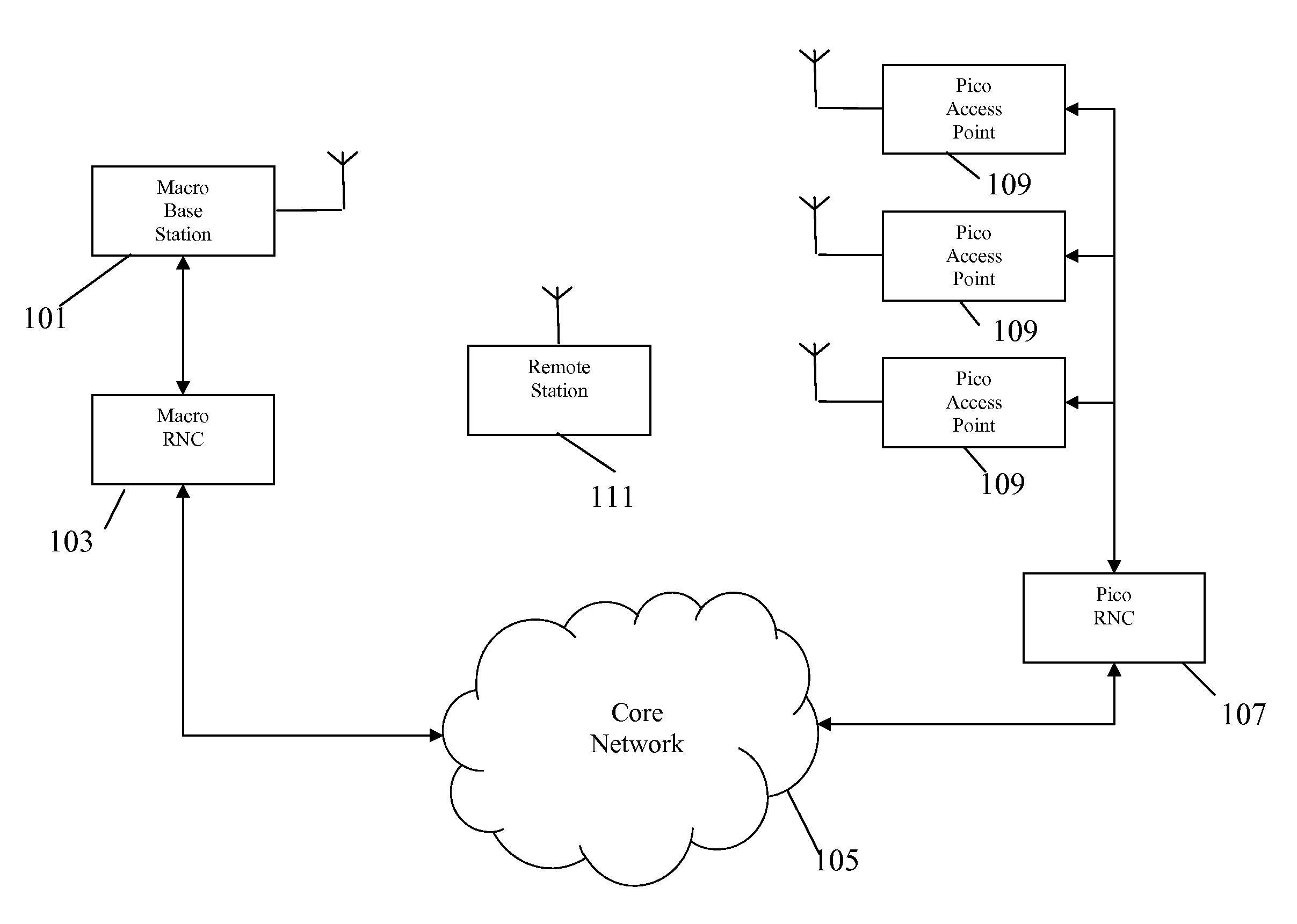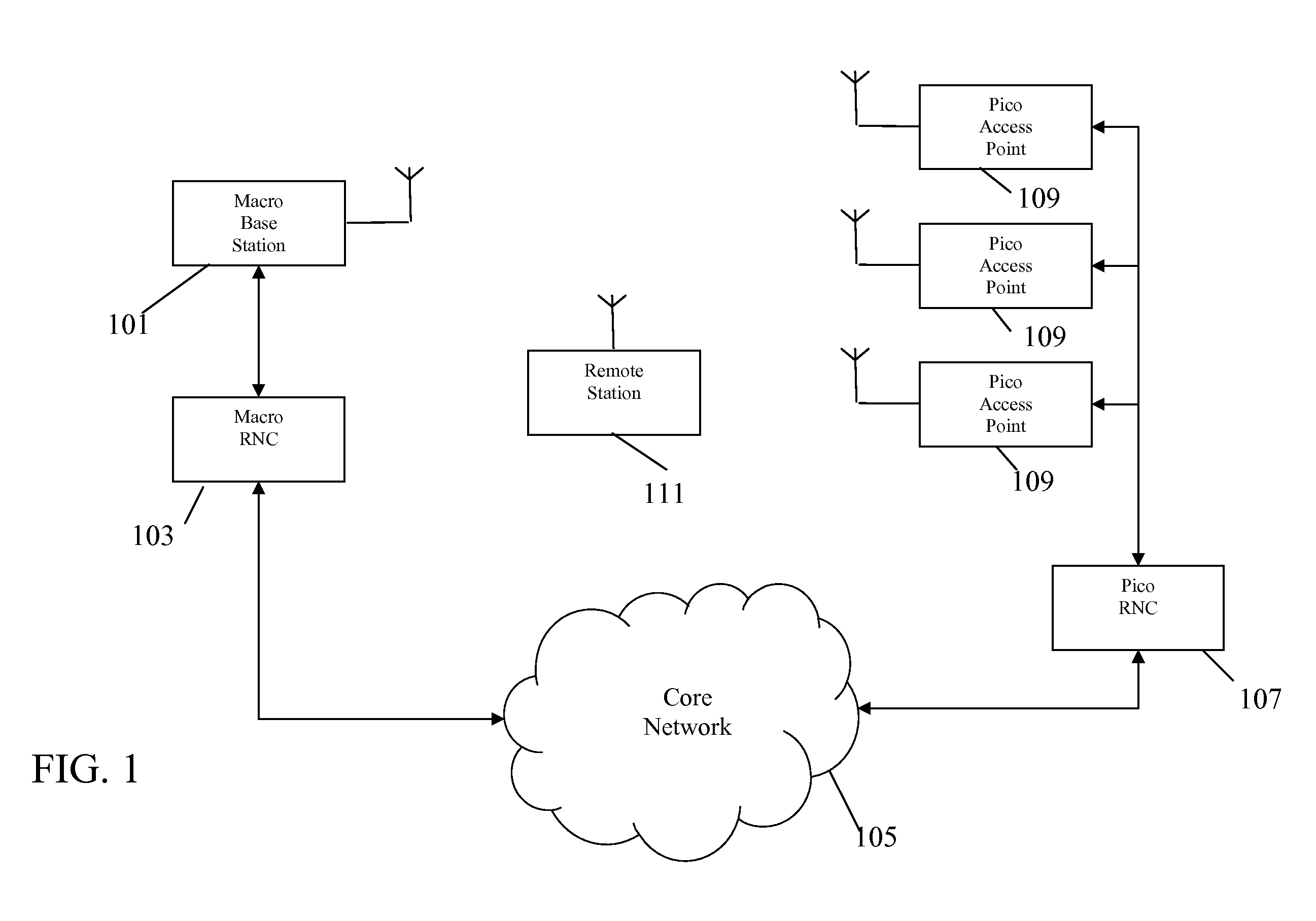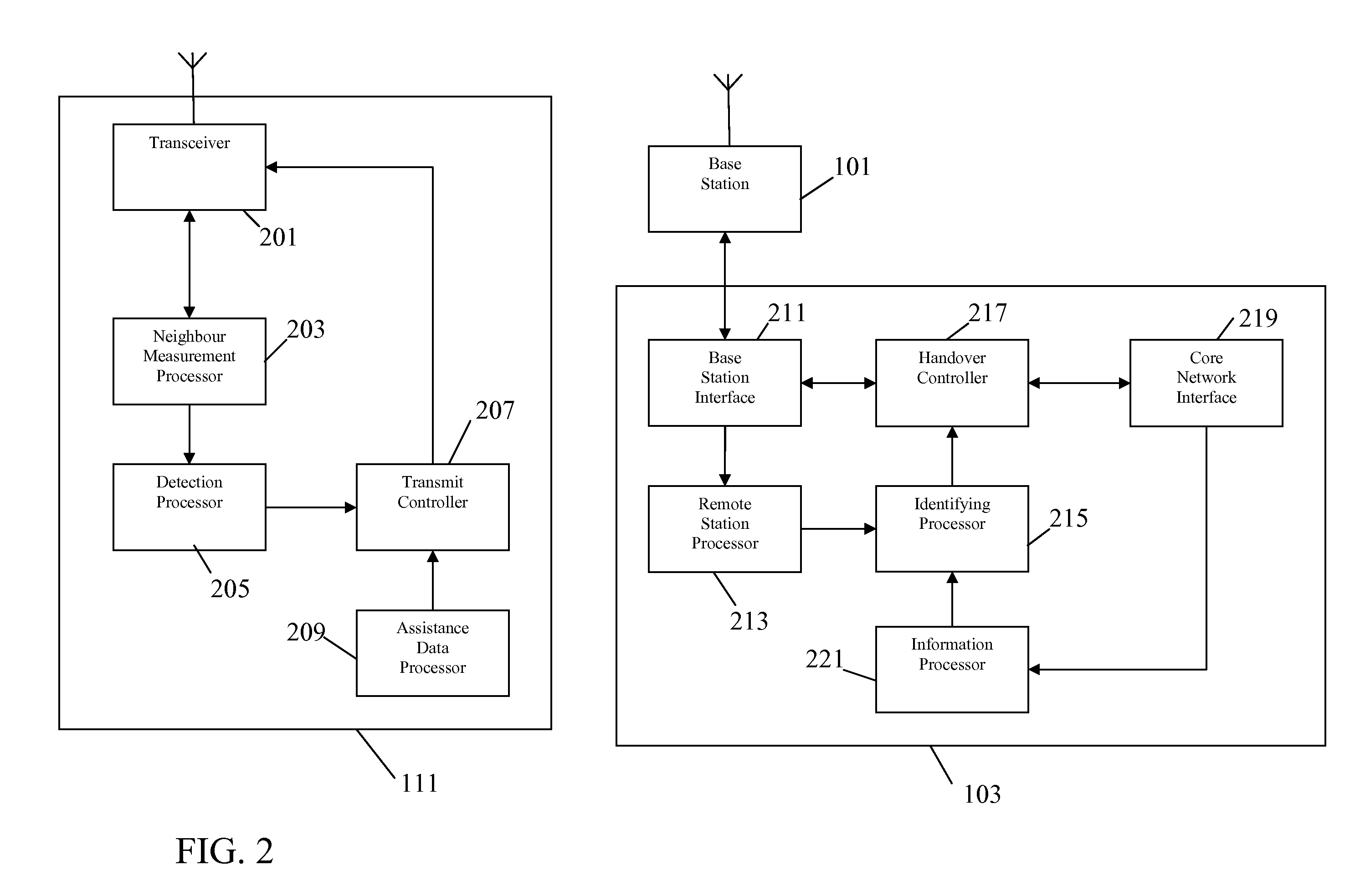Handover in a cellular communication system
a cellular communication system and handover technology, applied in the direction of electrical equipment, radio transmission, transmission, etc., can solve the problems of extending the current approach to scenarios where ue, cells are not practical, and the number of small underlay cells within a single macrocell is large, so as to facilitate implementation and improve performance.
- Summary
- Abstract
- Description
- Claims
- Application Information
AI Technical Summary
Benefits of technology
Problems solved by technology
Method used
Image
Examples
Embodiment Construction
[0022]The following description focuses on embodiments of the invention applicable to a CDMA cellular communication system and in particular to a 3rd Generation Cellular communication system such as a UMTS System. However, it will be appreciated that the invention is not limited to this application but may be applied to many other communication systems.
[0023]FIG. 1 illustrates an example of a cellular communication system in accordance with some embodiments of the invention. In the system, a macro-layer is formed by macrocells supported by base stations. Furthermore, an underlay layer of picocells are supported by a large number of access points corresponding to picocell base stations. Specifically, each access point may have an intended coverage of a single house or dwelling, and for a typical macrocell coverage area of 10 to 30 km there may be hundreds or even thousands of picocells each supported by an individual access point.
[0024]In the system, the macro base stations each have...
PUM
 Login to View More
Login to View More Abstract
Description
Claims
Application Information
 Login to View More
Login to View More - R&D
- Intellectual Property
- Life Sciences
- Materials
- Tech Scout
- Unparalleled Data Quality
- Higher Quality Content
- 60% Fewer Hallucinations
Browse by: Latest US Patents, China's latest patents, Technical Efficacy Thesaurus, Application Domain, Technology Topic, Popular Technical Reports.
© 2025 PatSnap. All rights reserved.Legal|Privacy policy|Modern Slavery Act Transparency Statement|Sitemap|About US| Contact US: help@patsnap.com



